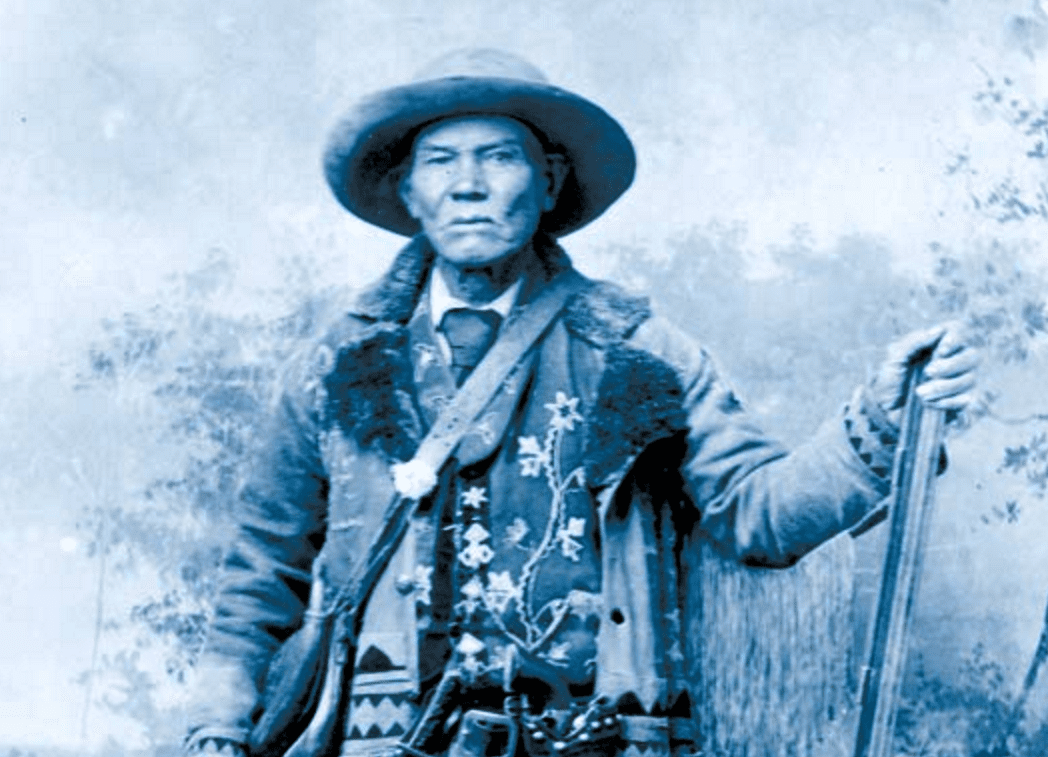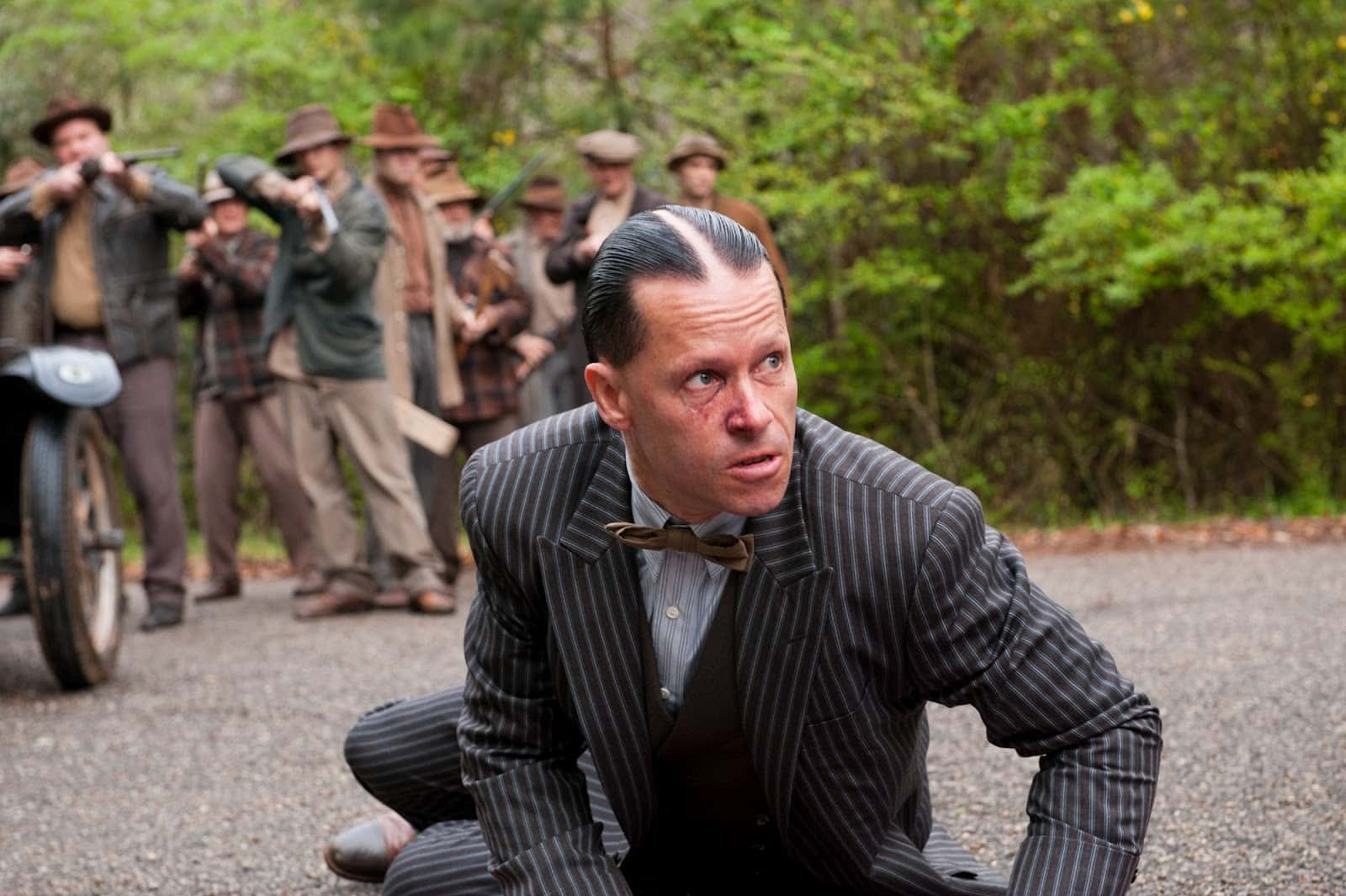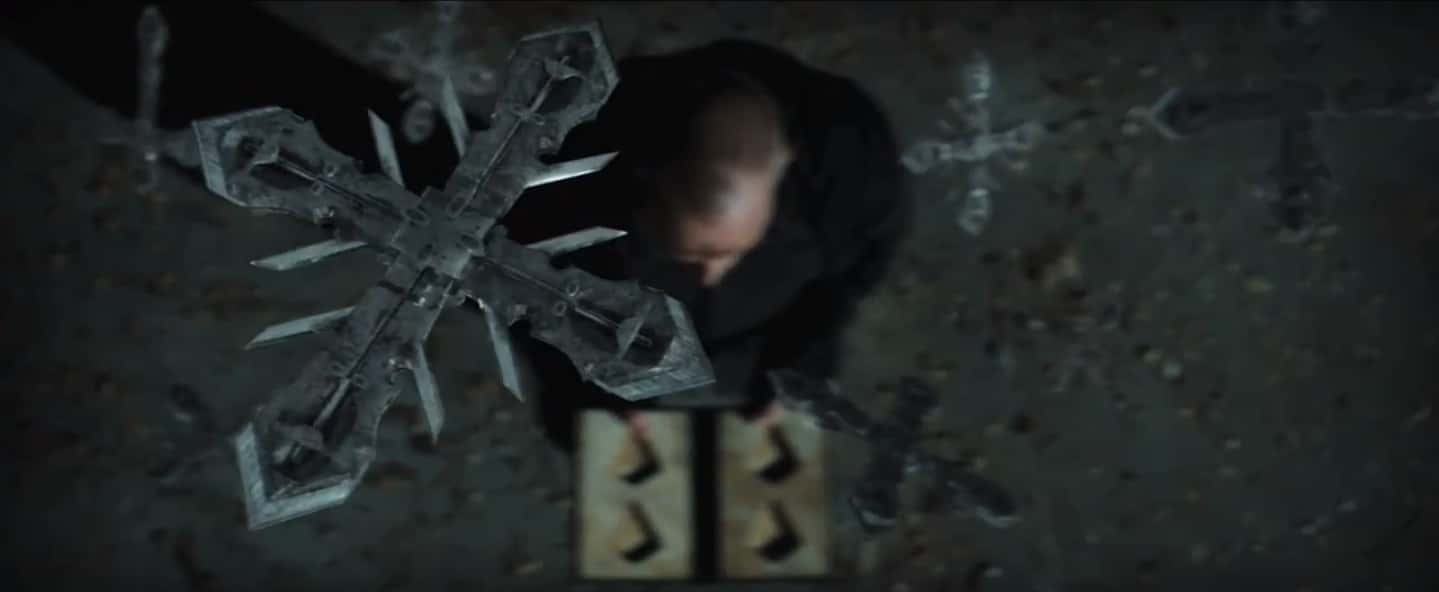Dreaded bounty hunters have haunted criminals and fugitives for centuries, whether they were Roman slave-catchers, Old West gunslingers, or modern “bail enforcement officers.” People should keep their wits about them as they check out these 42 facts about bounty hunters through history.
42. Bad Behavior
Former WWF star David Schultz is probably best known for assaulting 20/20 reporter John Stossel while Stossel interviewed him about wrestling’s secrets. His WWF career ended shortly afterwards, and Schultz became a bounty hunter, tracking down around 1,700 fugitives, some as far away as Egypt, for over 15 years.
 Youtube
Youtube
41. Crime and Punishment
Though in past centuries, the penalty for skipping out on bail was death, nowadays it just means a longer sentence. Sort of like in high school, where skipping detention meant getting two detentions, which is how I ended up in detention for an entire semester.
40. Underhanded Dealings
American bounty hunters in the 19th century could make extra profit by kidnapping free black people and selling them into slavery. In 1841, a bounty hunter kidnapped Solomon Northup, a free man, and brought him to the South as a slave. After he escaped, Northup wrote about his experiences in the book Twelve Years a Slave.
39. Immunity
In the United States, bounty hunters who cause injury while hunting a fugitive aren’t subject to civil liability—meaning you can’t sue them for it.
38. Fool Me Once
Over a quarter of the population of Ancient Rome was made up of slaves, who weren’t always happy with their situation and would often escape. Owners would offer hefty rewards to slave-catchers, and re-captured slaves would have to wear heavy iron collars, inscribed with instructions on what to do to them should they escape again.
 Youtube
Youtube
37. Say My Name
Bounty hunters don’t like that name anymore. They generally go by official-sounding titles such as “fugitive recovery agent” or “bail enforcement agent.”
36. War on Drugs
The Philippines has been using bounty hunters in its fierce war on drugs. In 2017, President Rodrigo Duterte offered $40,000 to any police officer who killed or captured fellow officers who had assisted a corrupt mayor involved in drug trafficking.
35. Hitting the Big Time
After American operatic tenor Carl Tanner completed his degree in Music, he became a truck driver and bounty hunter to make ends meet. A woman heard him singing Puccini’s “E lucevan le stelle” in his truck and told him he should be singing for a living—so he dropped bounty hunting to make a name for himself in New York City. The inspiration for Barry, perhaps?
34. Modern Technology
A method that modern bounty hunters use to track down fugitives is called “skiptracing.” This involves collecting every possible piece of information about the fugitive (the “skip”), including credit reports, job applications, utility bills. The skiptracer uses clues from this data to work out possible locations for their target.

History's most fascinating stories and darkest secrets, delivered to your inbox daily.
33. On the Right Track
You knew we’d get to him eventually: Duane Lee Chapman—aka “Dog the Bounty Hunter”—was convicted of first degree murder in 1976. He once thwarted a fellow inmate’s attempt to escape, and the praise he received helped inspire him to become a bounty hunter.
32. A Good Living
Modern bounty hunters in the US can earn as much as $100,000 a year, tracking down up to 150 fugitives in that time.
31. International Incident
Bounty hunters have to be careful about chasing fugitives internationally. One American bounty hunter caught a criminal in Canada and took him back to Florida for punishment. The Canadian government then charged the bounty hunter with kidnapping.
30. Bad Press
Morgan Spurlock, creator and star of the hit 2004 documentary Super Size Me, took on bounty hunting for his 2008 film Where in the World Is Osama bin Laden? The movie was panned so viciously that Spurlock hasn’t read his press ever since.
29. Strange Ambitions
Leonard Padilla is a notorious bounty hunter who ran for mayor of Sacramento twice—the first time, from federal prison. The second time he ran, he outed an opponent as a child molester.
28. Striking a Deal
Leonard Padilla once convinced serial killer Wesley Shermantine, who was on death row, to reveal the locations of his victims’ bodies in exchange for $33,000. Shermantine wanted the money for candy, a typewriter, and a tombstone for his parents. Pretty reasonable, as far as shopping lists go.
27. Serious Consequences
Old West bounty hunter Mickey Free was born in Mexico and spent his childhood in Arizona Territory, but at the age of 12 he was kidnapped by the Pinal Apache. The US military tried to recover him, but they went after the wrong Apache group and sparked the Chiricahua Wars.
 Pinterest
Pinterest
26. Nom de Guerre
Mickey Free was originally named Felix Telles, but he gained the name that would make him famous when he joined the US Army’s Apache Scouts—the soldiers couldn’t pronounce his real name. As a Scout, Free tracked such well-known outlaws as Geronimo and the Apache Kid.
25. Breaking the Sabbath
Most of the US still follows bounty hunting rules laid out in an Old West court ruling in 1873. This ruling established that bounty hunters could chase a fugitive into another state, could break and enter into the fugitive’s house to arrest them, and could even arrest fugitives on Sundays. *Gasp* not Sundays!
 Youtube
Youtube
24. A Sure Thing
Bounty hunting originated in medieval England, where defendants would offer a friend or family member as “surety.” If the defendant disappeared, their surety would be tried and sentenced in the defendant’s place—so it’s not surprising that sureties would hunt down fleeing defendants.
23. Scared Straight
American defendants are 28% less likely to skip bail if their state allows bounty hunters.
22. Act Naturally
Ralph “Papa” Thorson was a successful American bounty hunter from the 1950s who passed away in 1991. Steve McQueen portrayed Thorson in the 1980 movie The Hunter, in which Thorson had a cameo as a bartender.
21. Written in the Stars
“Papa” Thorson was a bishop with the Temple of Inspired Living, and a devotee of astrology, which he credited with his success. He once described bounty hunting as “picking the right astrological moment to hunt the man down.” So if Mercury is in Gatorade, the criminals are more likely to get caught? Sure, Papa.
20. Carrying On
Following the death of “Papa” Thorson in 1991 (from an alleged car bomb), his widow, Dottie, and his daughter, Brandi, took over the bounty hunting business. They are the subject of the early-2000s TV series The Huntress.
19. Big Money
Wild West outlaw Jesse James had a bounty of $5,000 on his head—about $90,000 in today’s money.
18. Hollywood Hunter
Former South African politician Rick Crouch once worked as a high-profile bounty hunter and private investigator in the US, and has been called “PI to the stars”. He published a book called Bail Investigator Training Manual (Become a bounty hunter now).
17. Career Change
In 1877, Texas Ranger John Riley Duncan successfully tracked down and helped to ambush infamous outlaw Wes Hardin. Duncan got a share of the $4,000 reward for Hardin’s capture, and decided to quit his job and become a bounty hunter.
16. Minor Obstacles
Duncan was a successful bounty hunter, but he did have some misadventures. In 1878, a prostitute shot him inside a brothel, which required him to get a tracheotomy and to use a silver breathing tube for the rest of his life. Duncan continued to find success as a bounty hunter after this.
 Pinterest
Pinterest
15. Star-Crossed Lovers
The Dunn Brothers were five Old West bounty hunters and occasional cattle rustlers. They made their biggest catch when they shot and killed notorious outlaws “Bittercreek” Newcomb and Charley Pierce. Newcomb was romantically involved with the Dunns’ sister Rose, and they simply waited for him and Pierce to come over and visit his girlfriend.
14. A Bad End
The Dunn Brothers were not well-loved, especially since they supplemented bounty hunting with robbery and cattle rustling. Eventually, Sheriff Frank Canton started investigating Bill Dunn—when Bill tried to ambush him, Canton fired first and killed Bill. With their reputation tarnished, the Dunn Brothers stopped bounty hunting.
13. One-Man Operation
Millard “Dry Wolf” Gardner was a famous Prohibition-era lawman. He got his start as a bounty hunter, working alone to track down bootleggers and bring them to court. As a deputy sheriff, he was known for walking into speakeasies, having a drink, and then raiding the place.
12. Simmering Tensions
In 1850, American Congress passed the Fugitive Slave Act, allowing bounty hunters to track down escaped slaves in free states with almost no regulation. There was also hefty punishment for anyone who assisted an escaped slave. Several Northern states passed laws protecting fugitive slaves in response, augmenting tensions between the North and South.
11. Domino Effect
Domino Harvey was a British model and bounty hunter who worked in the United States. She attained considerable notoriety before her death of a fentanyl overdose in 2006—Kiera Knightley even portrayed Harvey in the biopic Domino.
10. Conflict of Interest
Pat Garrett, a former New Mexico saloon owner, became a local sheriff and found himself tracking down an old acquaintance of his—Billy the Kid. After tracking down various members of Billy’s gang, Garrett claimed that he ambushed Billy in the dark and killed him. However, some think that Garrett faked his old pal’s death.
9. Good at Their Job
As of 2004, bounty hunters were catching around 31,500 fugitives per year, making up 90% of bail jumpers.
8. Going Incognito
Charlie Siringo worked as a detective and bounty hunter for Pinkerton Detective Agency in the 1880s and 90s. He was an expert at undercover work, and he successfully infiltrated Butch Cassidy’s Wild Bunch gang. Siringo’s information led to the death of Kid Curry, prompting Butch Cassidy and the Sundance Kid to flee to South America.
 Pinterest
Pinterest
7. Dying Breed
Nowadays, bounty hunting is illegal in all but a few countries, and it’s mostly practiced in the United States and the Philippines.
6. Getting a Head
Tom Tobin was an early explorer, US Army Scout, and bounty hunter in New Mexico and Colorado. In the 1860s, the army requested Tobin’s help in hunting down Mexican murderer Felipe Espinosa. Tobin turned down the help of a troop of soldiers, tracked Espinosa and his cousin alone, ambushed them in their camp, and returned to the army with the Espinosas’ heads in a sack. Now that’s how you make an entrance.
 Ranker
Ranker
5. Ancient Headhunting Firm
Charietto was a German bounty hunter who worked for the Roman Emperor Julian the Apostate. At night, he would watch for barbarian raiders crossing the Rhine on the empire’s frontier, and in the morning he would bring their severed heads to the Romans.
4. Gaming the System
Roman slaves and slave-catchers could work in cahoots, to the annoyance of the masters. A slave-catcher could offer to buy the fugitive slave from their master at a reduced rate once captured. The captured slave could then pay the slave-catcher a hefty price for his freedom—so the slave-catcher would profit, the slave would gain his freedom, and the master would have lost a slave for less than his market value.
 Youtube
Youtube
3. John of Priests
Seán na Sagart—aka John Mullowney—was an infamous priest hunter in 18th-century Ireland. At a time when Catholic priests were forced to take an oath recognizing Queen Anne as the head of the Church of England and Ireland, there was a bounty of anywhere from £5 to £100 on the heads of rogue Catholics.
2. Selling Out
John Mullowney started out as a horse thief, but he was arrested and sentenced to death for his crimes. A judge, learning of his “low character,” offered to spare Mullowney’s life if he became a priest hunter, which he enthusiastically embraced.
1. Cruel and Unusual
John Mullowney used cruel deception to capture Catholic priests. He would pretend to be on his deathbed and would send for someone to perform last rites, and then would kill or capture the priest. One time, when Mullowney had killed the second-last priest in the area, the very last priest dressed as a woman to attend the funeral. Mullowney found him and attacked him, but the priest fought back and a bystander killed Mullowney.
Sources: 1, 2, 3, 4, 5, 6, 7, 8, 9, 10, 11, 12, 13, 14, 15, 16, 17, 18, 19, 20, 21, 22, 23, 24, 25, 26, 27, 28, 29, 30, 31, 32, 33, 34













































